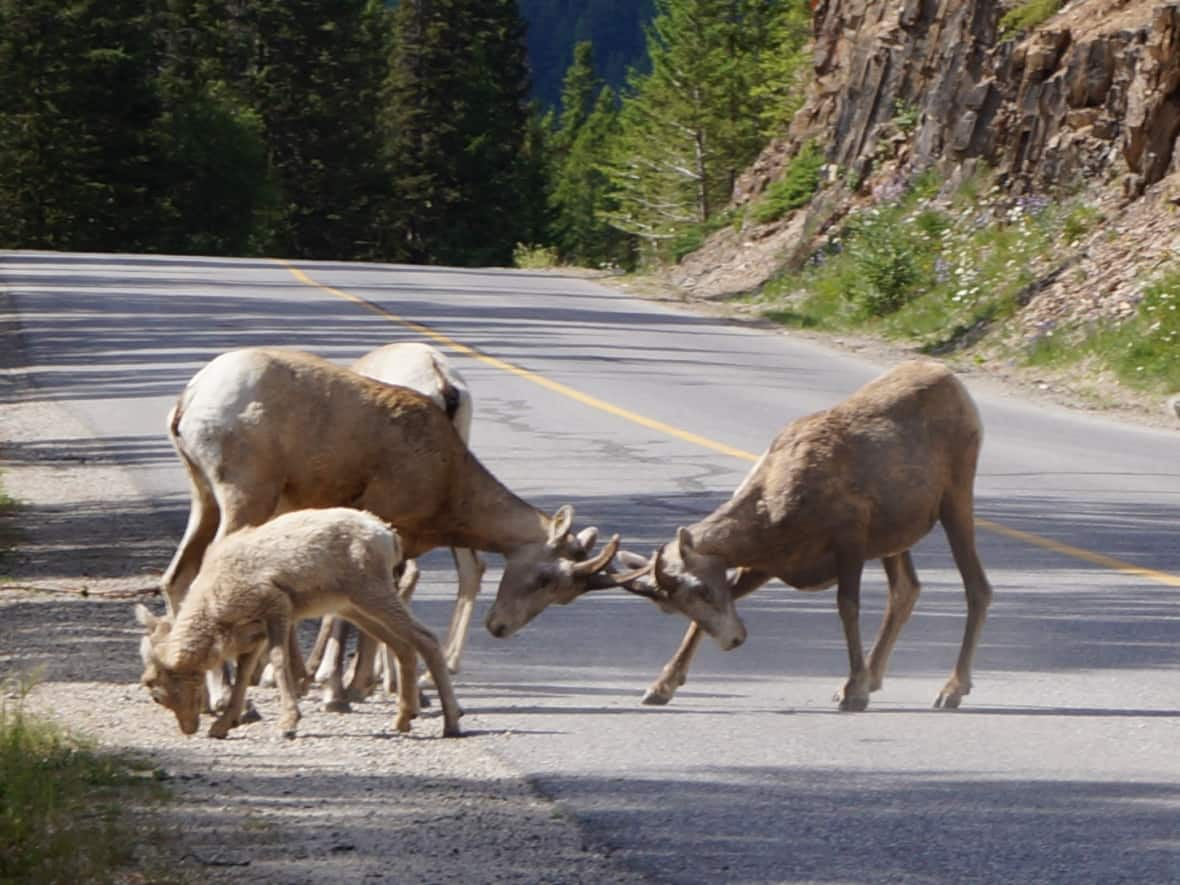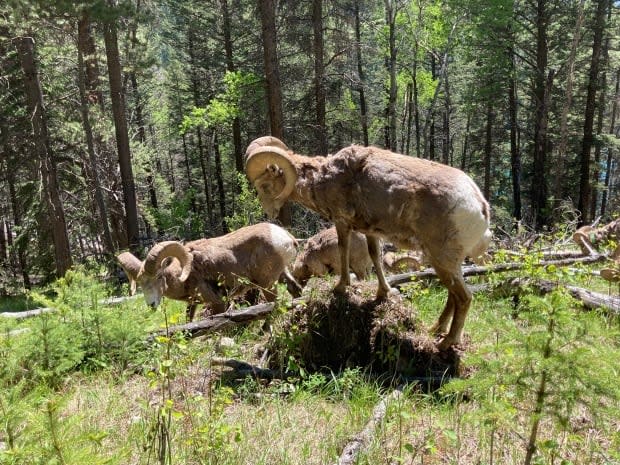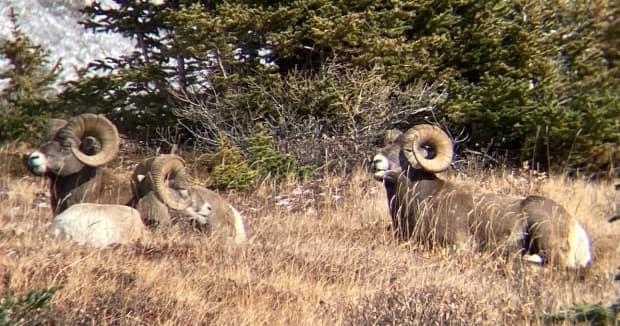Female bighorn sheep with smaller horns are less reproductively fit, U of A study says

A new study from the University of Alberta looked at the connection between horn size and reproductive fitness in bighorn sheep, which found that female sheep with smaller horns are less reproductively fit.
"There's been a lot of research during the past into male big horn sheep," Samuel Deakin, author of the study and a Ph.D. candidate at the University of Alberta, told CBC Edmonton's Radio Active.
"So, we decided to turn our focus on females and look at what influences their horns, or what indications their horns had toward reproductive fitness."
The study was published in March and analyzed 45 years of data. It looked at a population on Ram Mountain, a remote area about 30 kilometres east of the Rocky Mountains near Nordegg.

Male sheep use their horns for eating and fighting. Their horns can reach up to 40 inches and weigh up to 14 kilograms.
"But in females, we don't know what the horns are really useful for," Deakin said.
"Whether they're used in defence or intrasexual competition or whether they're just simply an indication that a female comes from good stock."
Female horns are less impressive and generally smaller than male horns.
"We found that females with longer horns would have them raise their first offspring at an earlier age," he said.
Long-horned females have usually had their first lamb by the age of 3. Short-horned females on the other hand, have their first lamb by the age of 5, according to Deakin.
LISTEN | Study finds link between horn size and reproductive fitness:
Most female bighorn sheep live to anywhere between 12 to 18 years old.
One theory for the cause of shrinking horns in female bighorns, Deakin said, is trophy hunting.
For the sport, hunters select the largest bighorn male sheep, which decreases horn size in the population, and through genetic link, decreases the horn size for females.
"And then we found out that females with shorter horns are less reproductively fit," Deakin said.
That then affects population size.
Hunting regulated, but other experts concerned
Matt Besko is the director of wildlife health and licensing with Alberta Fish and Wildlife, said that hunting bighorn sheep is regulated and is managed according to a specific target of harvest that ensures the population remains sustainable.
Alberta is home to 9,000 bighorn sheep, 6,000 of which live on provincial lands that are eligible for harvest and another 3,000 that stay in protected areas.
According to the Alberta Guide to Hunting Regulations 2022, a trophy sheep has horns that extend past the anterior edge of the eye, in profile. If the horn extends to the centre of the nostril, the animal is then considered a full-curl trophy sheep.
Hunting season for rams started in late August this year, and approximately 3,000 hunters are participating this season. Most of these hunters are from Alberta, with only 100 non-Alberta residents.

"They're a fascinating species that inhabit a part of the world which is very unique and very beautiful," Besko said.
"They're also quite rare in terms of being able to hunt and harvest an animal."
The appeal for hunting this provincial mammal lies in the challenges of the hunt, Besko adds.
But Devon Earl, a conservation specialist from Alberta Wilderness Association, is worried what this study could mean for Alberta's bighorn sheep population.
"It really sheds light on the fact that in this particular instance, trophy hunting of bighorn sheep was not sustainable," she said. "It was affecting the reproductive fitness of these female bighorn sheep."
She said the association will be keeping an eye on the population.


